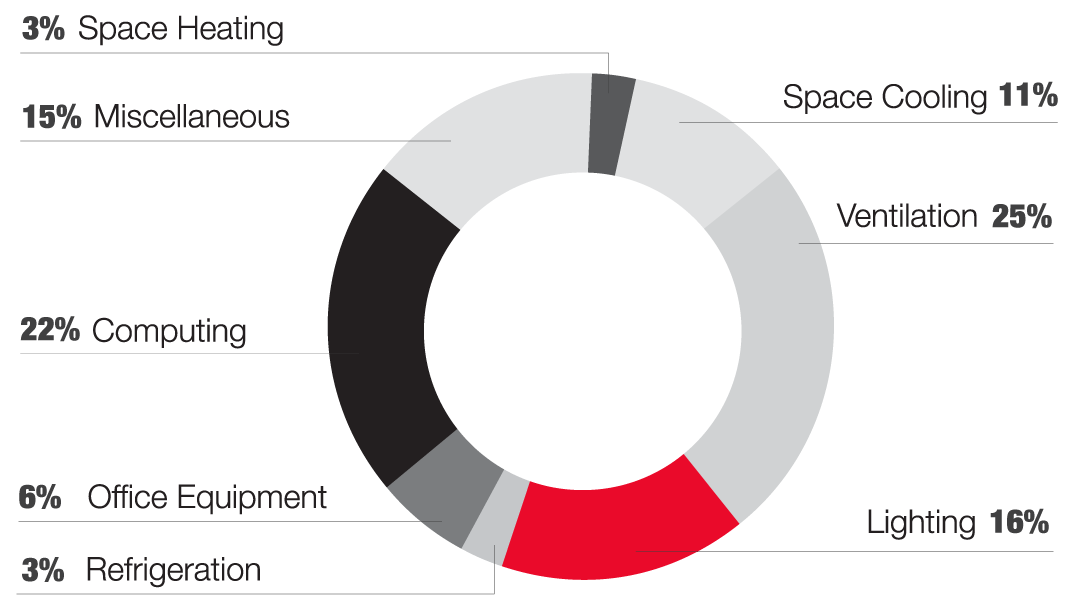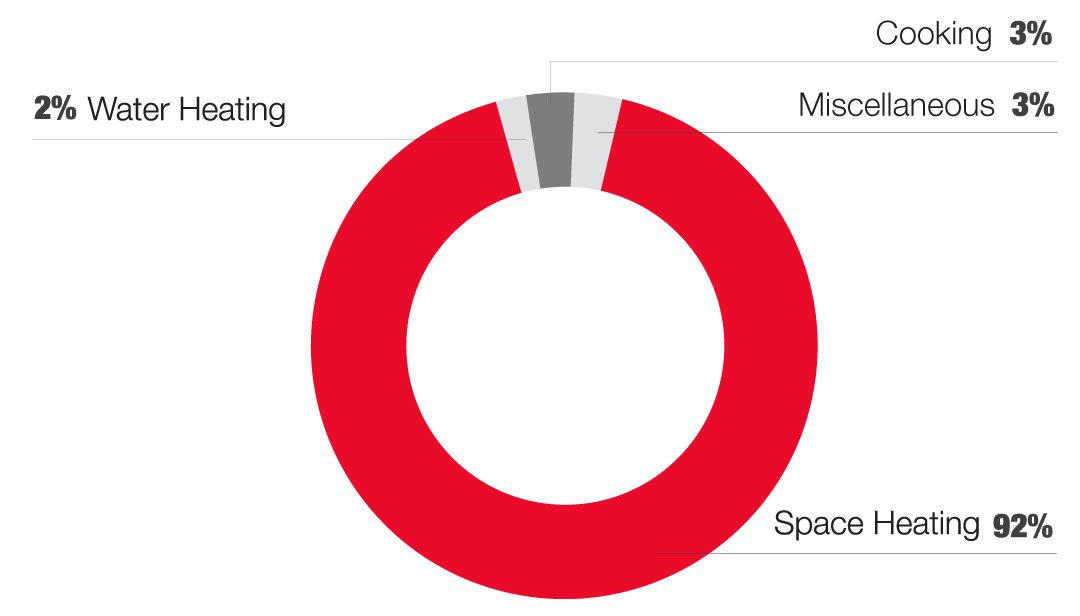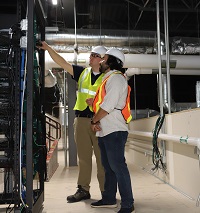Deposit more energy savings
Did you know the average financial institution in the Midwest spends nearly $14,000 per year on electricity and natural gas? Using office equipment like computers and printers, and keeping the building a comfortable temperature during the work day are two of the biggest culprits. Bundling upgrades and saving on improvements is easier than ever with the Small Business Express program, which connects you with qualified contractors and rebates to create lasting energy efficiency savings for your building.
What uses the most energy in financial institutions
The following pie charts illustrate which financial institution activities use the most energy and cost the most. Space heating, cooling and ventilation account for a large portion. Electricity end uses include (from the top, counterclockwise): 3% space heating, 15% miscellaneous, 22% computing, 6% office equipment, 3% refrigeration, 16% lighting, 25% ventilation and 11% space cooling. Natural gas end uses include (from the top, counterclockwise): 3% cooking, 2% water heating, 92% space heating and 3% miscellaneous.
Electricity End Uses

Natural Gas End Uses

What's costing financial institutions the most
| End Uses | Average Electric Cost/Month | Average Gas Cost/Month | Energy Savings Potential |
|---|---|---|---|
| Space Heating, Cooling and Ventilation | $400 | $106 |
Moderate
|
| Office Equipment and Computing | $287 | - |
Moderate
|
| Lighting | $164 | - |
High
|
Small Business Express is here to lend a hand
Small Business Express makes it easy for you to get professional guidance to identify energy-saving opportunities. Eligible rebates can help lower your out-of-pocket cost to replace failing equipment, and help save energy and money long term.
Ways to Save

Space Heating, Cooling and Ventilation
Heating and cooling equipment is the largest energy user in financial institutions. There are several ways to reduce costs, from simple changes to replacing equipment.
- Simple: Seal around windows and doors with new caulk and weather stripping every few years to prevent energy loss.
- Low cost: Service equipment and change filters regularly.
- Capital investment: Replace older heating and cooling equipment with new, energy-efficient equipment. Add insulation to ensure cool or warm air stays inside after sealing windows and doors. Implement advanced rooftop controls by retrofitting existing packaged rooftop air units to reduce heating, cooling and fan energy usage.

Computing and Office Equipment
Computing and office equipment accounts for nearly a quarter of a financial institution’s monthly costs. There are several simple upgrades that can be implemented for energy savings.
- Simple: Manage the computer network to ensure computers go into low-power or “sleep” mode after a period of inactivity. Turn off and unplug electronic equipment when not in use to prevent unnecessary power usage. Decommission any server room equipment that is operating but unused.
- Low cost: Install advanced power strips that detect a drop in energy usage and turn off electronics when staff has left for the day. Consider server virtualization to reduce the number of physical servers required for operations.
- Capital investment: Upgrade to ENERGY STAR® certified computers, servers, uninterruptable power supplies, printers, copiers, etc. when replacing equipment.

Lighting
Lighting upgrades and changes can be implemented to save energy and money, as well as reduce maintenance, to bring down that cost of $164 a month.
- Simple: Turn lights off when a space is not in use.
- Low cost: Install occupancy sensors to turn lights off for areas where lights might be left on for extended periods, despite not being occupied. Areas with good opportunity for installing occupancy sensors include bathrooms, storage areas, conference rooms and break rooms.
- Capital investment: Replace incandescent and fluorescent lights with LEDs to see savings of up to 50%! LEDs also have a longer life span resulting in reduced replacements. Replace exterior lights with LEDs to save even more.

See how your financial institution compares
Energy Use Intensity (EUI) is a common measure used to benchmark a building’s energy use as a factor of its size. To calculate EUI for your financial institution, total your electric bills for one year, then divide by your building’s square footage; repeat for natural gas. If the score is lower than those listed below, you are using less energy than most.
|
Average EUI for financial institutions in the Midwest
|
|
|---|---|
|
Electricity
|
Natural Gas
|
|
14.7 kWh/square foot
|
0.29 therms/square foot
|
Call us today at 800-432-8583 to learn about tools that can help you with benchmarking your facility.
Other Resources